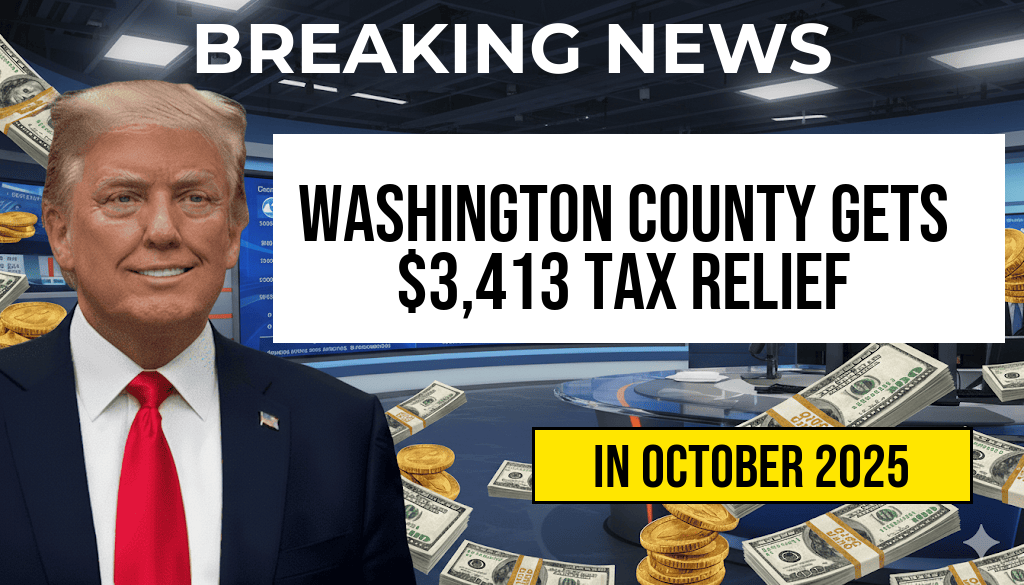A new federal tax policy for 2025 promises to deliver additional relief to low-income and senior Americans through a significantly increased tax deduction. The updated provision, effective starting January 1, 2025, introduces a $4,000 boost in deductions for qualifying taxpayers, aiming to ease financial burdens amid rising living costs. This change is part of recent legislative efforts to support vulnerable populations, including retirees and those with limited income. The increase is expected to benefit millions of Americans, providing a tangible reduction in tax liability and increasing disposable income for essential expenses such as healthcare, housing, and daily necessities.
Details of the 2025 Tax Deduction Increase
Who Qualifies for the New Deduction?
- Low-income Americans earning below certain thresholds set by the IRS
- Seniors aged 65 and older with adjusted gross incomes within specified limits
- Individuals claiming the Standard Deduction or those eligible for certain refundable credits
How the Deduction Works
The additional $4,000 deduction applies primarily to personal exemptions and specific itemized deductions, effectively lowering taxable income. For seniors and qualifying low-income individuals, this translates into reduced tax bills, particularly for those on fixed incomes or with minimal earnings. The IRS has clarified that the deduction applies uniformly, with adjustments for inflation and income thresholds outlined in the official guidelines.
Impact on Taxpayers
| Income Level | Before Deduction | After Deduction | Estimated Savings |
|---|---|---|---|
| Low-income individual (<$25,000) | $2,000 tax liability | $1,000 tax liability | $1,000 |
| Senior on fixed income ($30,000) | $3,000 tax liability | $2,000 tax liability | $1,000 |
Legislative Background and Rationale
The increased deduction stems from legislation enacted by Congress earlier this year, aimed at addressing economic disparities faced by vulnerable populations. The measure reflects a broader effort to reform the tax code to better serve seniors and low-income households, especially as inflation erodes purchasing power. According to the Wikipedia entry on U.S. taxation, tax deductions serve as a primary means to reduce taxable income, making them crucial for equitable fiscal policy.
Supporters argue that the additional $4,000 deduction will make a meaningful difference for households struggling to meet basic needs, while opponents express concerns over the fiscal impact and potential for increased deficits. Nonetheless, the Internal Revenue Service (IRS) has issued preliminary guidance to ensure taxpayers understand the qualification criteria and process for claiming the new deduction.
Implementation and Future Outlook
How to Claim the Deduction
Taxpayers eligible for the deduction will need to file their 2025 returns using updated forms, which include specific lines for claiming the increased exemption. The IRS has committed to providing detailed instructions and outreach efforts to assist filers in understanding the changes. Many tax preparation services are expected to incorporate the new deduction into their software, simplifying the process for individual filers.
Projected Economic Effects
Analysts estimate that the increase could reduce federal tax revenues by approximately $10 billion in 2025, with a significant portion benefiting seniors and low-income households. This shift aims to improve disposable income levels, potentially stimulating local economies and reducing reliance on social safety net programs.
Additional Supports and Considerations
- State-level adjustments: Some states may follow suit, offering supplementary deductions or credits aligned with federal changes.
- Inflation adjustments: Future years may see further modifications to the deduction amount to account for inflation.
- Tax planning tips: Financial advisors recommend early review of tax plans to maximize benefits under the new rules.
For more details, individuals can consult the official IRS website or speak with qualified tax professionals to understand how these changes may affect their specific situations.
As the 2025 tax season approaches, the expanded deduction represents a targeted effort to provide tangible financial relief for Americans most in need, aligning tax policy with broader social support objectives.
Frequently Asked Questions
What is the new 2025 tax deduction for low-income and senior Americans?
The 2025 tax deduction provides an additional $4,000 relief specifically aimed at low-income and senior Americans, helping to reduce their taxable income and ease their financial burden.
Who qualifies for the 2025 tax deduction?
Qualifying individuals include low-income earners and senior Americans who meet specific income and age criteria set by the IRS, ensuring those most in need receive the additional relief.
How does the $4,000 relief impact my taxes?
The $4,000 deduction decreases your taxable income, which can result in a lower tax bill or a larger refund, providing meaningful financial relief for eligible taxpayers.
When does the 2025 tax deduction take effect?
The new deduction is scheduled to be available starting with the 2025 tax year, allowing eligible taxpayers to claim the benefit when filing their 2025 returns in the following year.
How can I claim the 2025 tax deduction?
To claim the $4,000 relief, eligible individuals should report it on their tax returns using the appropriate IRS forms, and may also want to consult a tax professional for guidance on maximizing their benefits.






